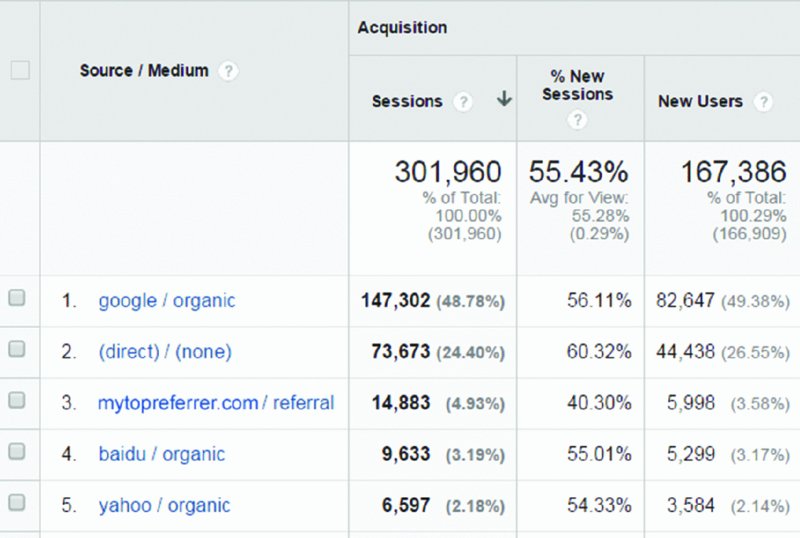7 Acquisition Reports
At a basic level, most of Google Analytics (GA) boils down to two types of data: how your visitors are getting to your website (or to your mobile app or mobile app download), and how they’re interacting with your website (or mobile app).
In Chapter 6, “Events, Virtual Pageviews, Social Actions, and Errors,” we learned how to use events, virtual pageviews, and social tracking to provide a more complete picture of visitor behavior. This chapter focuses on better acquisition tracking: we break down GA acquisition terminology and concepts, learn how we can help GA clarify the ambiguities in default acquisition reporting, and customize the GA acquisition reports to align most closely with our traffic sources.
Acquisition Terminology and Concepts
Let’s begin by reviewing some of the core acquisition terms and concepts in GA.
Medium and Source
All GA sessions are recorded with at least two dimension values that describe acquisition: medium and source. As illustrated in Figure 7.1, Medium is the most general dimension value that GA uses to designate traffic acquisition, and Source is more specific. While source is sometimes used more generally in discussion to mean where your traffic is coming from, within the GA interface it refers specifically to the actual Source dimension.

Figure 7.1 All sessions have a source and medium value, as indicated in the Source/Medium ...
Get Google Analytics Breakthrough now with the O’Reilly learning platform.
O’Reilly members experience books, live events, courses curated by job role, and more from O’Reilly and nearly 200 top publishers.

